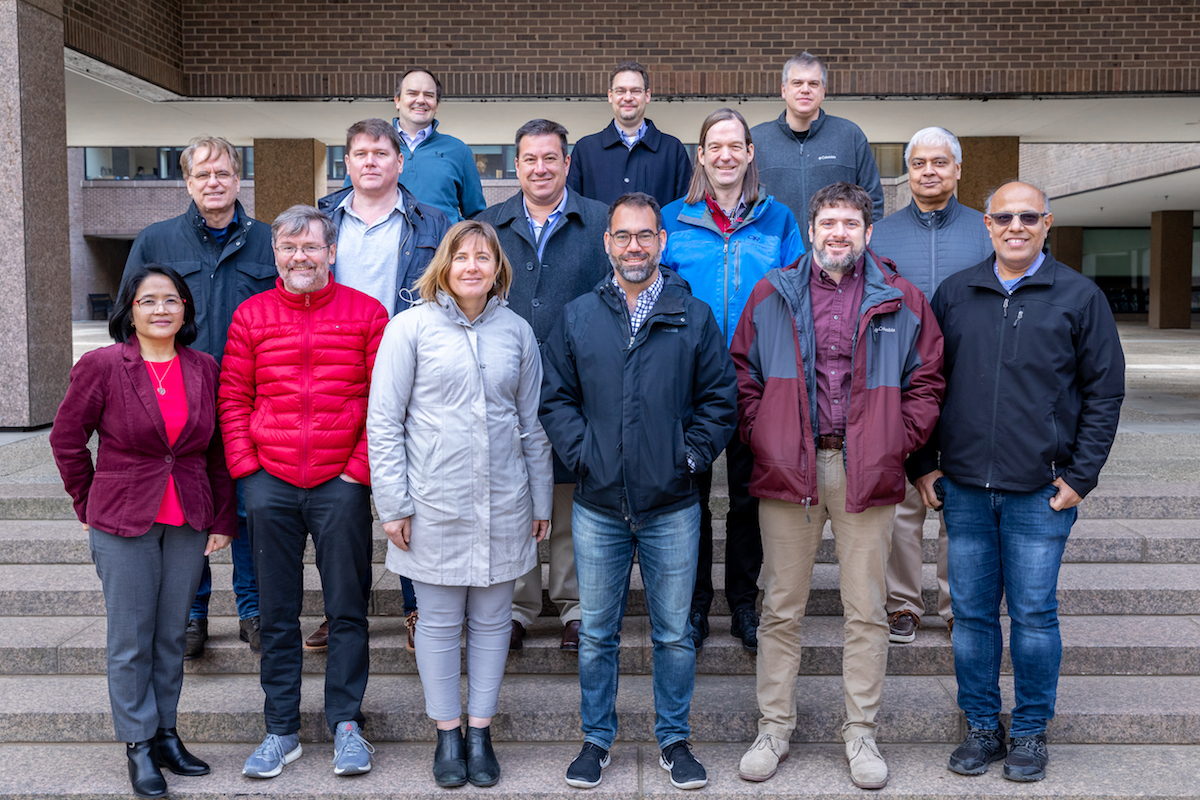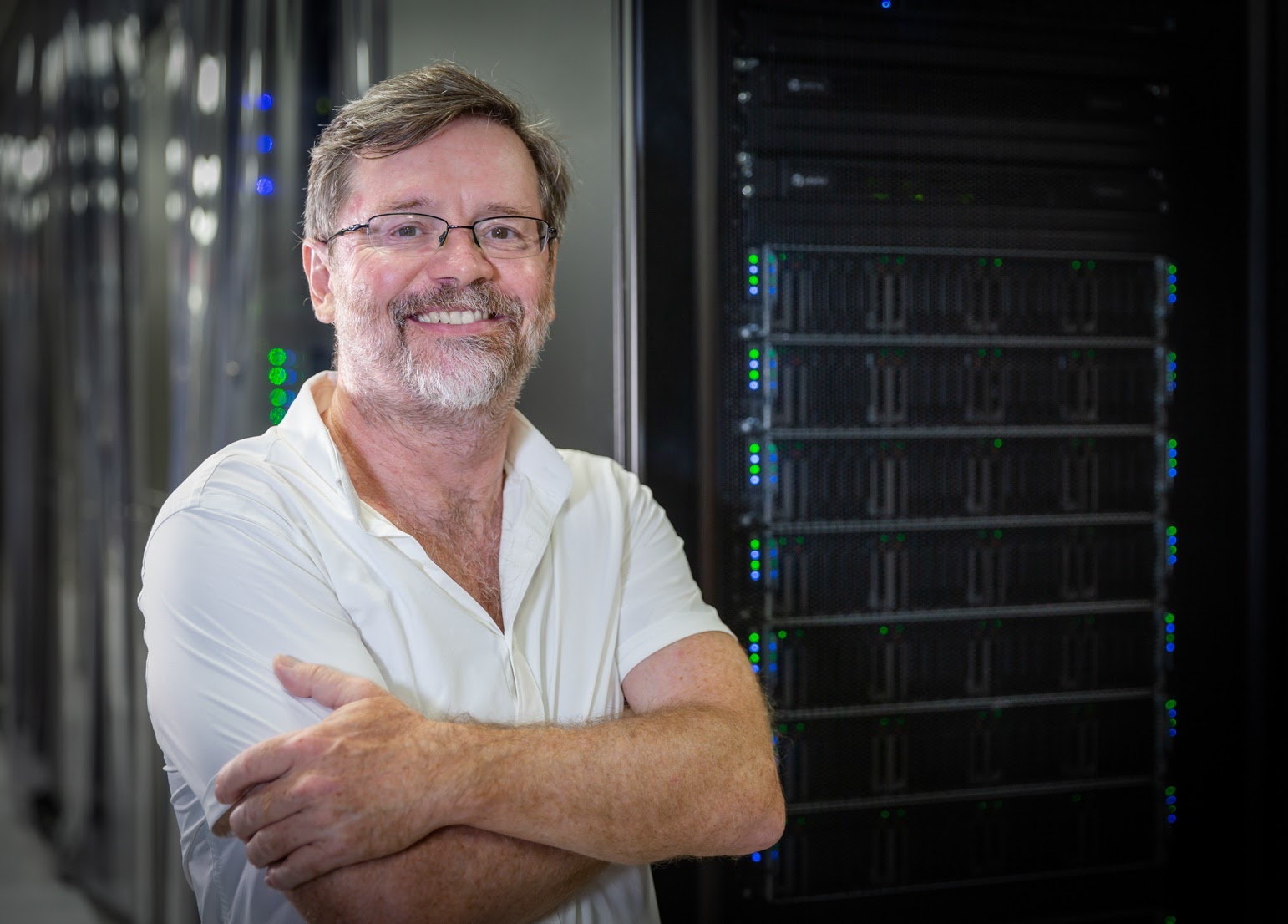When asked to describe his job, the director of one of the world’s most advanced high-performance computing centers uses a pre-digital metaphor.
“The key,” says Frank Würthwein, director of the San Diego Supercomputer Center (SDSC), “is being able to play matchmaker.”
By that Prof. Würthwein, who assumed the role on Dec. 1 after having served as interim director since July, refers to SDSC’s mission to link science and cyberinfrastructure (CI) in ways that solve scientific and societal problems.
“The SDSC’s core competency is translating innovation into practice,” he says. “Combining the elements of cyberinfrastructure – the experts, the software, our partners – is the key to that translation.”
Würthwein sits on the executive board of the Institute for Research and Innovation in Software for High Energy Physics (IRIS-HEP), a software institute established in 2018 to meet the Large Hadron Collider’s formidable computing challenges in the coming decades. Funded by a grant from the National Science Foundation, IRIS-HEP aims to develop tools and techniques whose impacts can extend beyond high energy physics.
As SDSC director, Würthwein says that one of his primary tasks is “having your finger at the pulse of the problems that are looking for solutions.”
A prime example, says Würthwein, is Firemap, a web-based tool that helps simulate, predict, and visualize the spread of wildfires. Funded by an NSF grant awarded to the University of California San Diego in 2013, Firemap combines data from satellite imagery, mountaintop camera feeds, and environmental sensors with weather data and fuel maps into an integrated platform that can forecast wildfires in real time. The platform also enables fire managers to model hypothetical scenarios to help them better mitigate future wildfires.
Building off of this work is BurnPro3D, an AI-powered decision-support platform that helps public officials better understand the risks and tradeoffs when conducting prescribed burns, a practice that helps deprive wildfires of fuel. Funded last year with a $5 million grant from the NSF’s Convergence Accelerator program, the project unites researchers from SDSC with a diverse group of collaborators, including researchers from Los Alamos National Laboratory, the Tall Timbers Research Station and Land Conservancy in Florida, the US Geological Survey, the University of Southern California, the US Forest Service, and others.
An eclectic outlet
A central part of the SDSC director’s role is to identify the right collaborators for the right projects, and Würthwein relishes the task.
“We work with industry, we work with third parties, we work with funding agencies, we work with NGOs, we work with various individuals,” he says. “It’s a great pleasure to look at the customer base and see the diversity.”
A particle physicist by training, Würthwein is no stranger to projects that call for mass coordination. Before taking the helm of the SDSC and its more than $40 million annual budget, he worked on the Compact Muon Solenoid at the Large Hadron Collider, an experiment involving thousands of scientists and engineers from more than 200 institutions around the world.
Despite his background in a discipline that he describes as “esoteric,” Würthwein says he has always been drawn to a broad variety of subjects. “I’ve always had a hard time drawing lines around physics,” he says.
Würthwein’s multidisciplinary instincts make him well suited for SDSC, which provides computing resources to projects across a wide array of disciplines, including high-energy physics, genomics, Earth sciences, chemistry, and economics. “My new job description requires me to talk to a diverse set of people all the time,” he says. “I’ve turned my eclectic interests into a day job.”
The position affords Würthwein with the ideal perch for playing matchmaker. “In my role I can focus on opportunities for new collaborations while members of our SDSC community focus on the many other important functions of our center,” he says. “Together, we identify the problems for which we search for solutions.”

University of California physicist Frank Würthwein (front row, second from left) poses for a group photo with his fellow IRIS-HEP executive board members outside Princeton University’s Jadwin Hall in February 2020. Photo Credit: Richard Soden, Physics Department, Princeton University
‘Pi in the CI’
Würthwein can encapsulate SDSC’s mission with a single Greek letter. “The letter π is for us a symbol of what we do,” he says.
The letter π’s two legs represent the various scientific disciplines on one side, and cyberinfrastructure on the other. The crossbar on top represents the work of linking the two legs together.
Since 2014, the SDSC has recognized outstanding examples of this work with its “π Person of the Year” award. That year, the award went to Ilkay Altintas, now SDSC’S Chief Data Science Officer. Dr. Altintas helped create the Kepler collaboration, a scientific workflow application that allows scientists across a broad range of disciplines to share and merge datasets, models, software tools, and other analytical components. Last year’s award recognized the research scientist Subhashini Sivagnanam, who developed a way to use blockchain technology to establish the provenance and preserve the integrity of research data.
According to Würthwein, coupling innovation with practice requires a solid dose of optimism. “The matches are never perfect,” he says. “Invariably it’s square holes and round pegs. You have to be willing to trust in your ability to bring it all together.”
